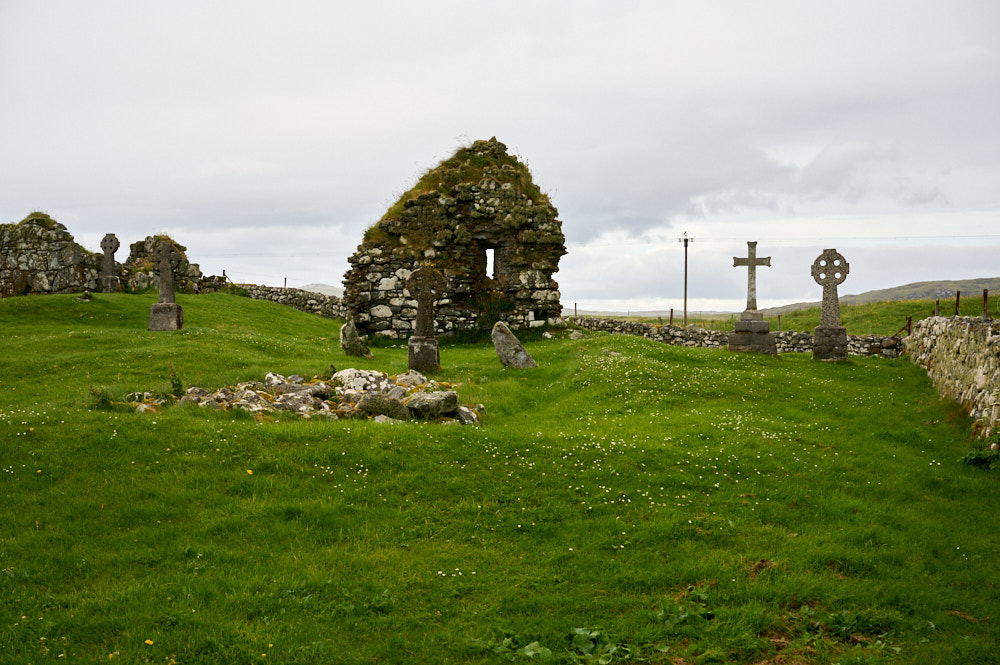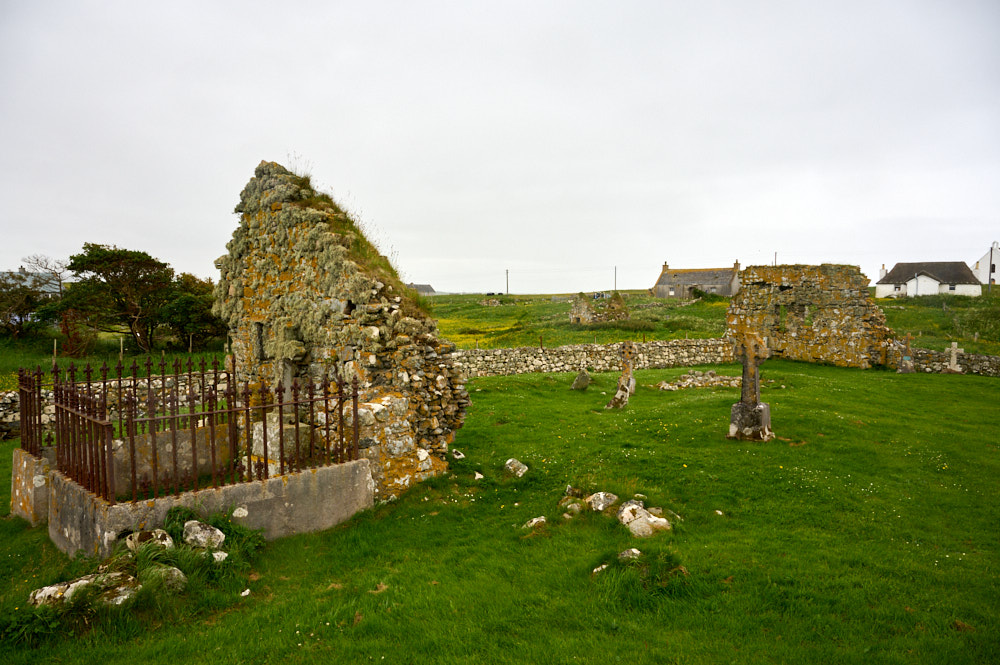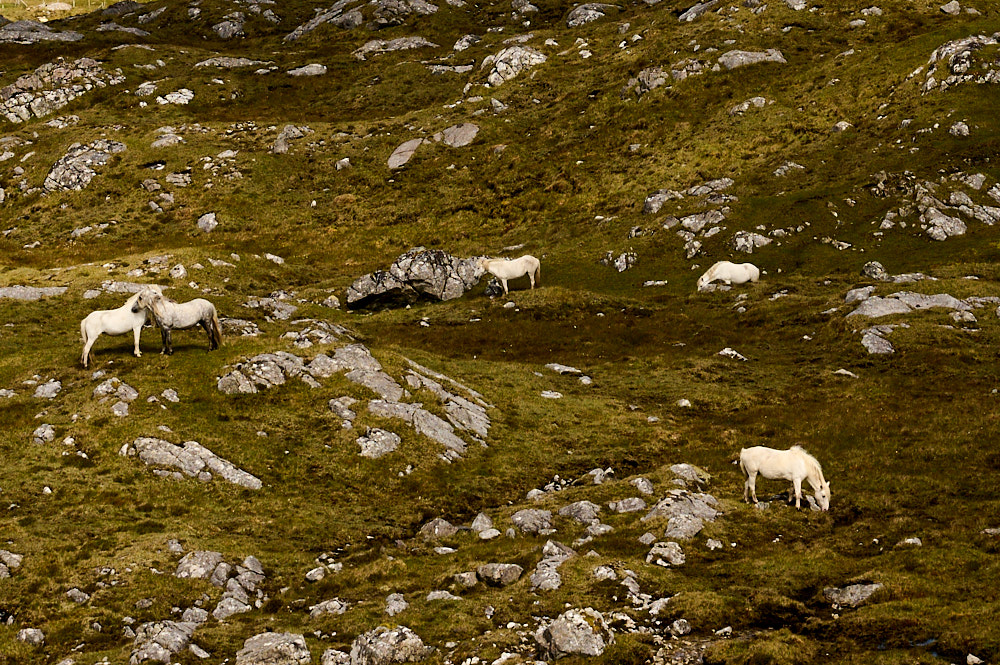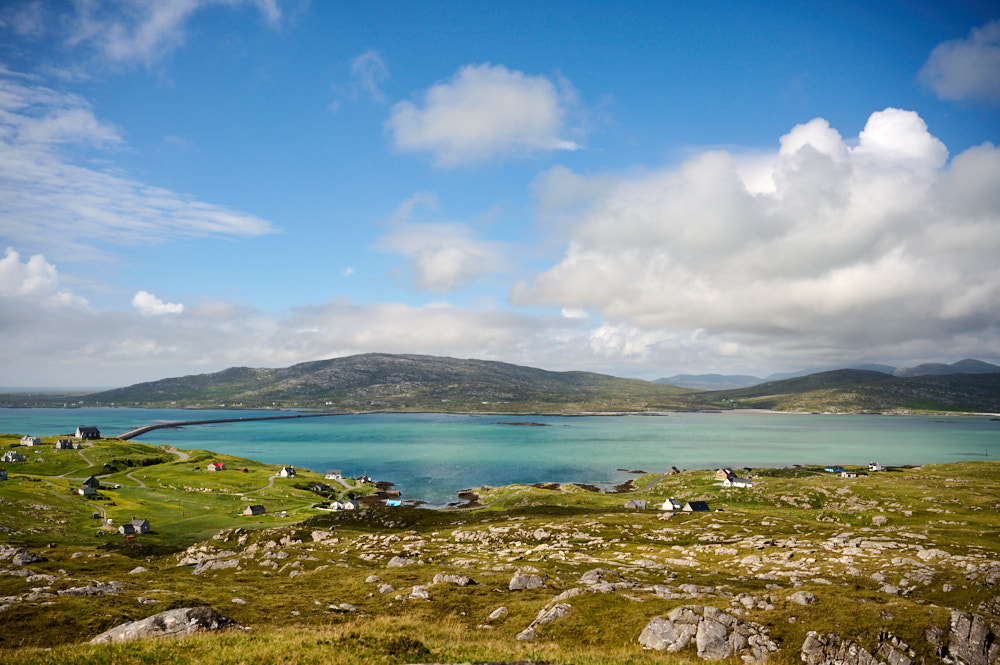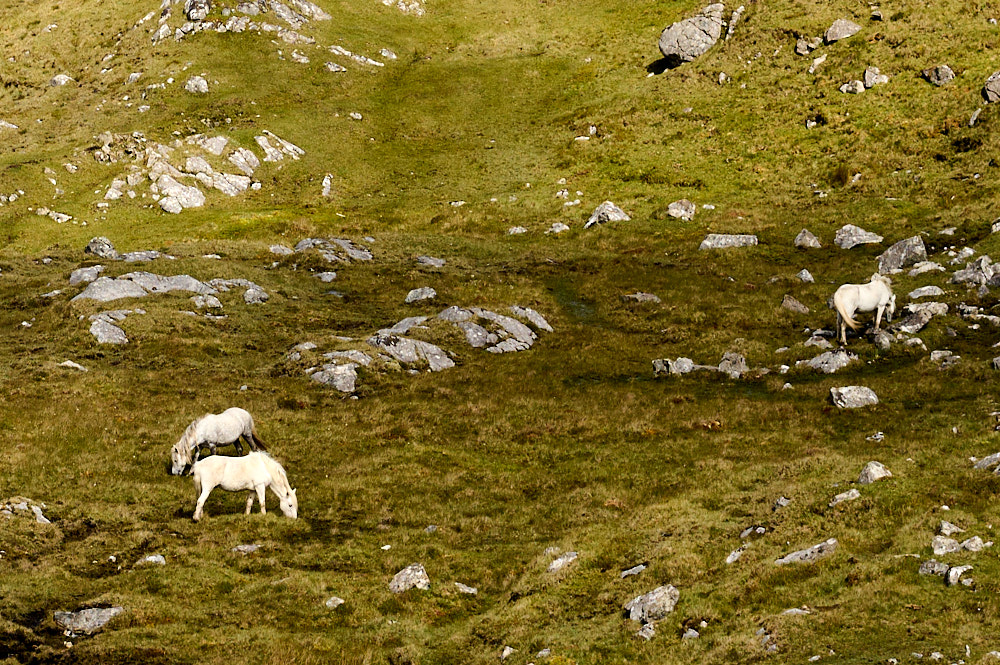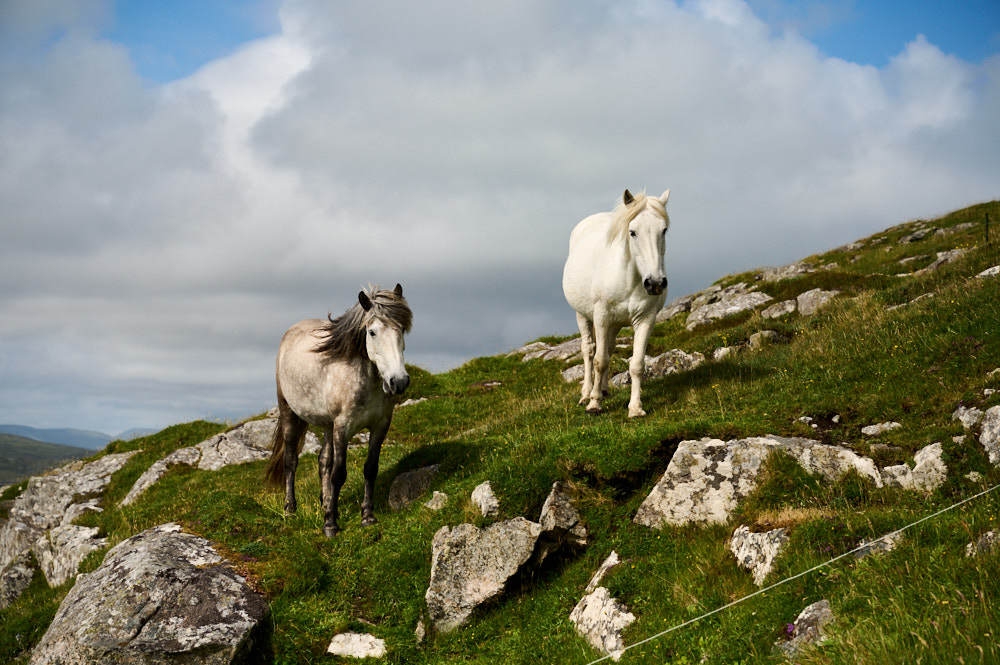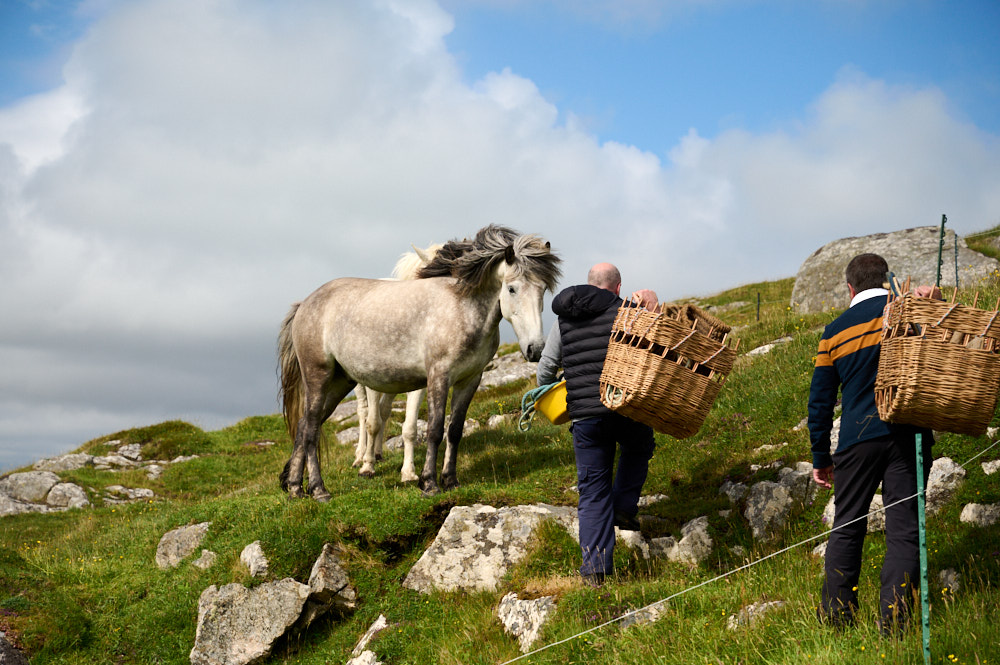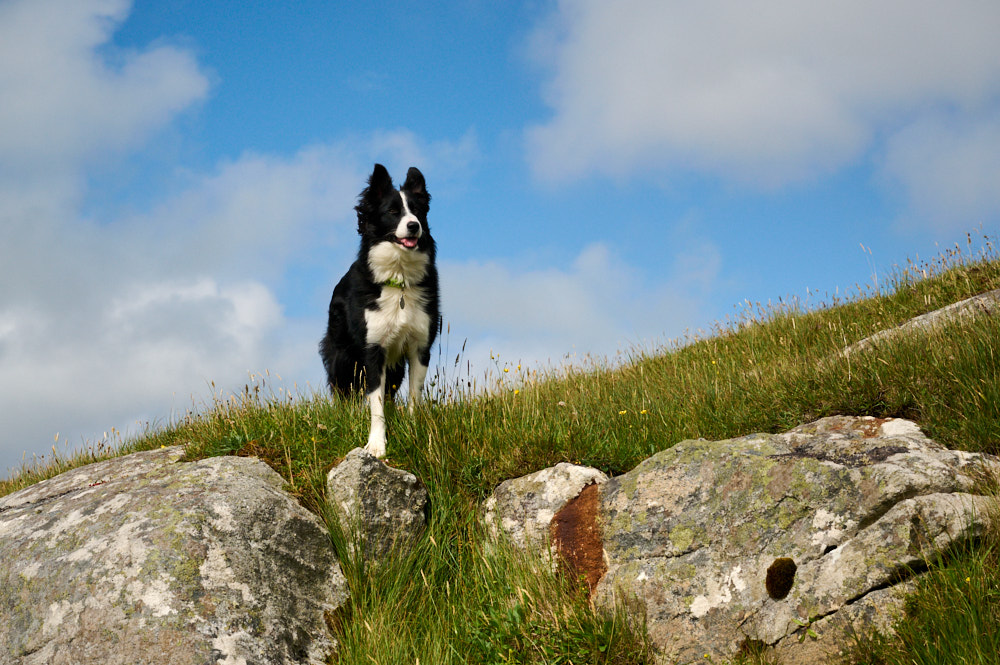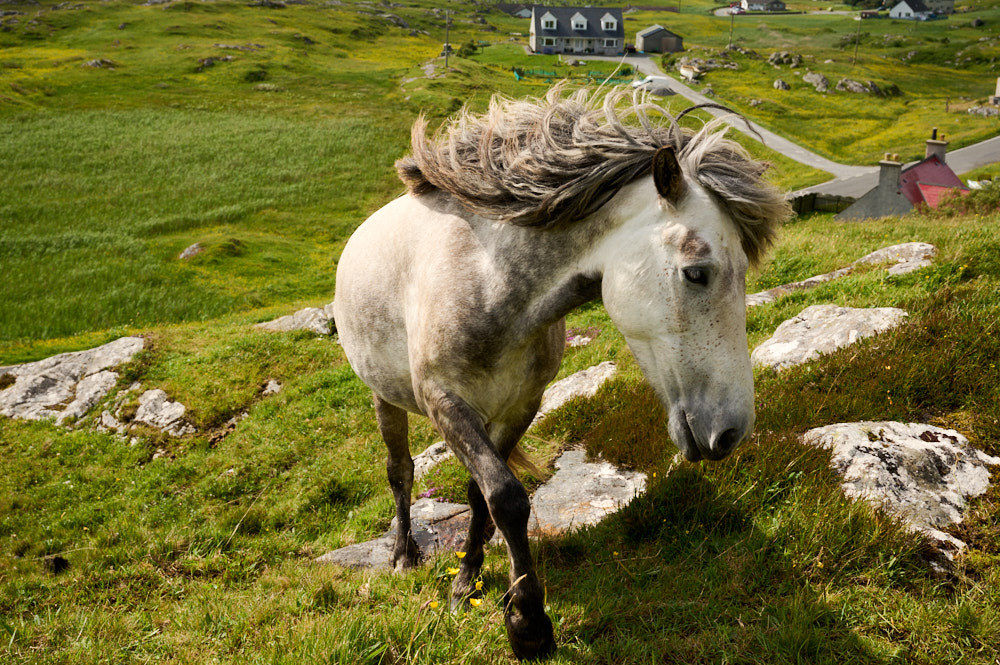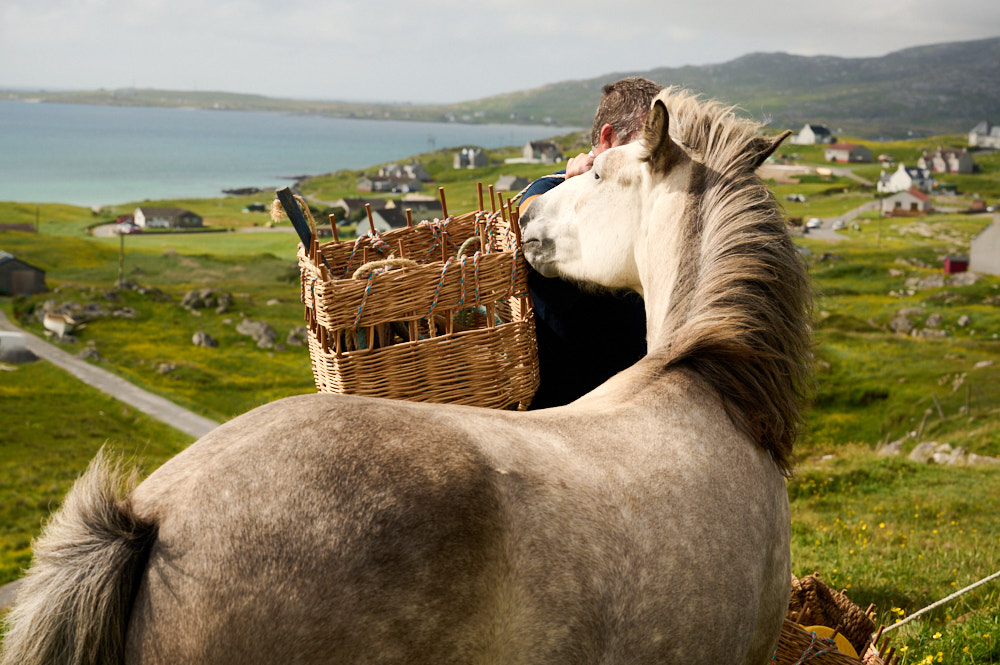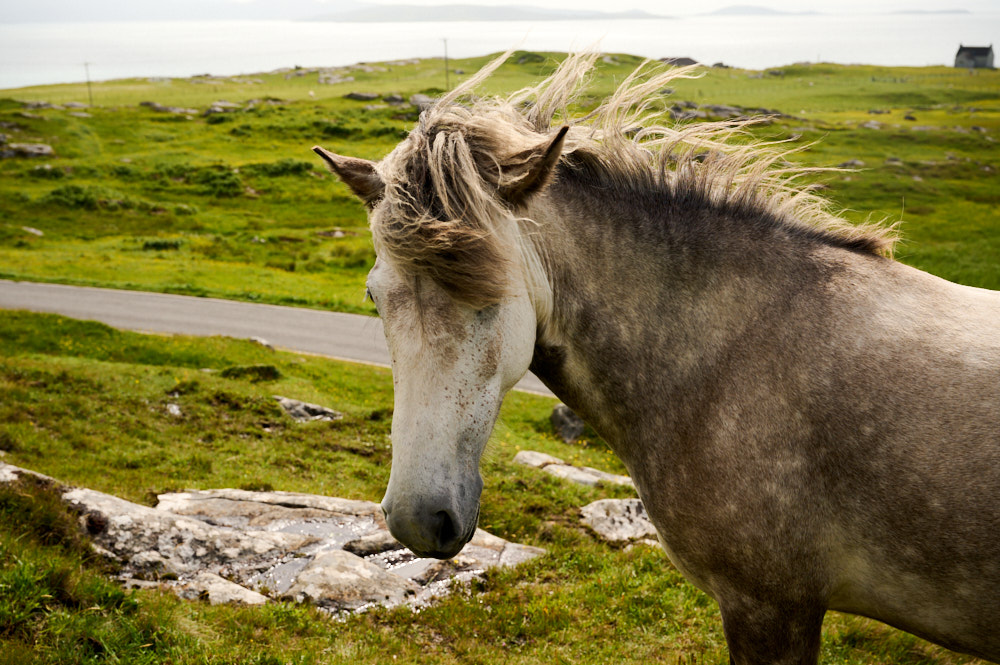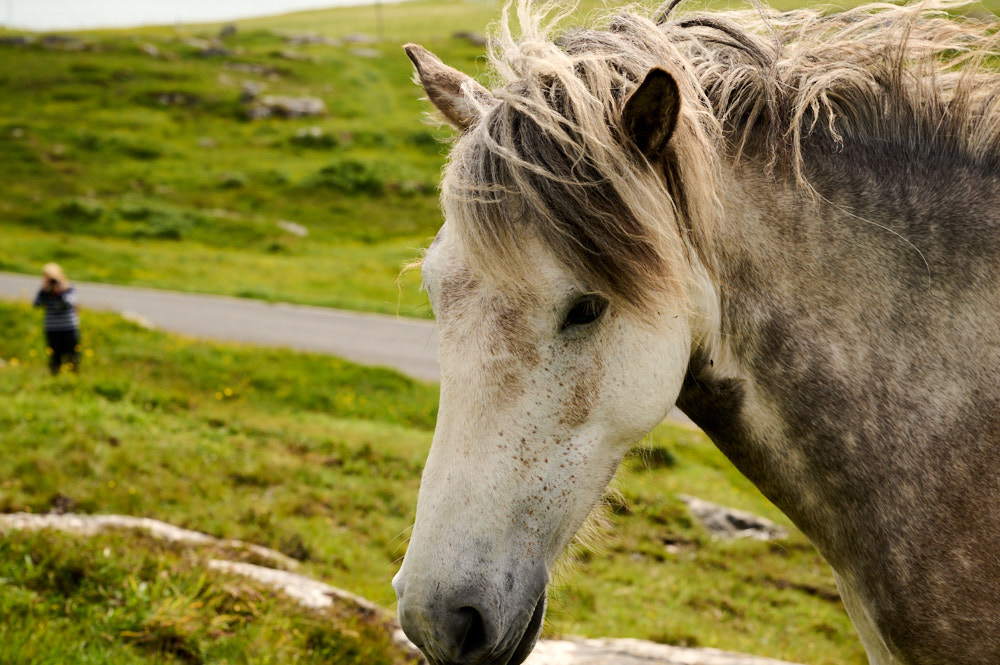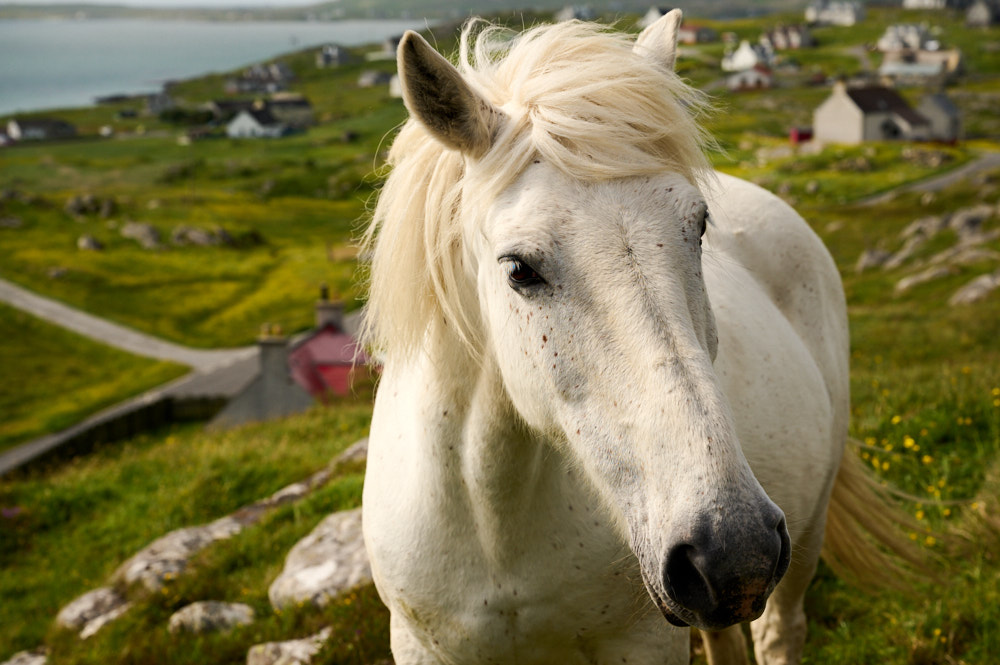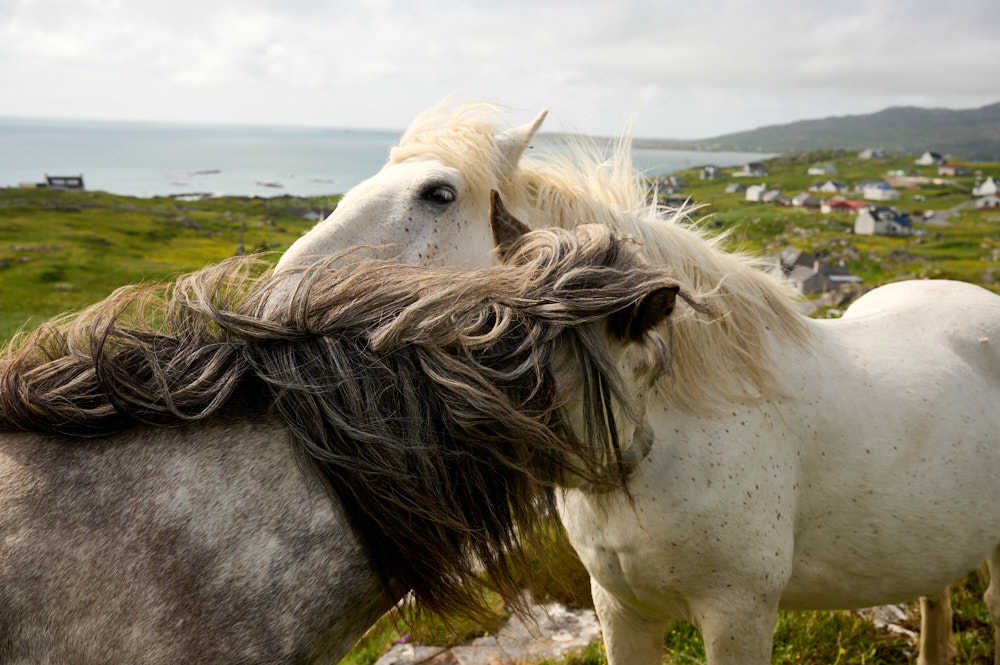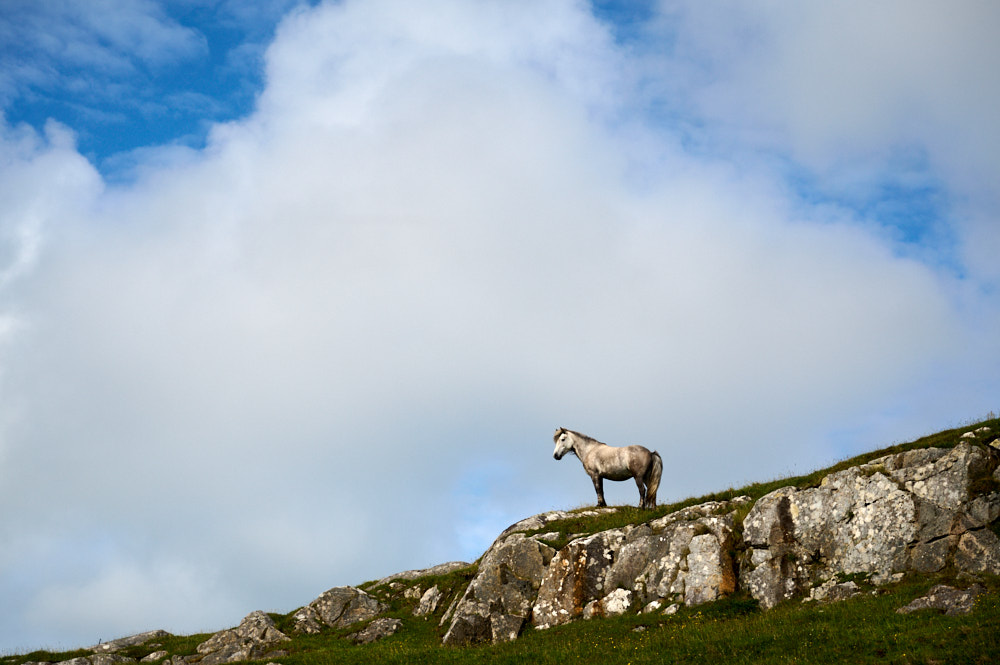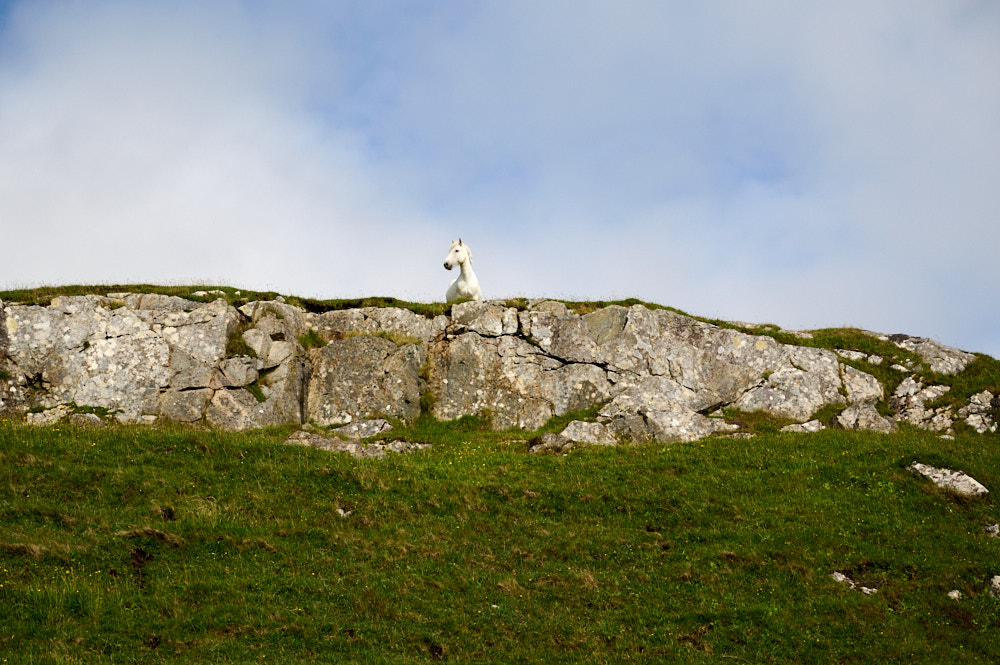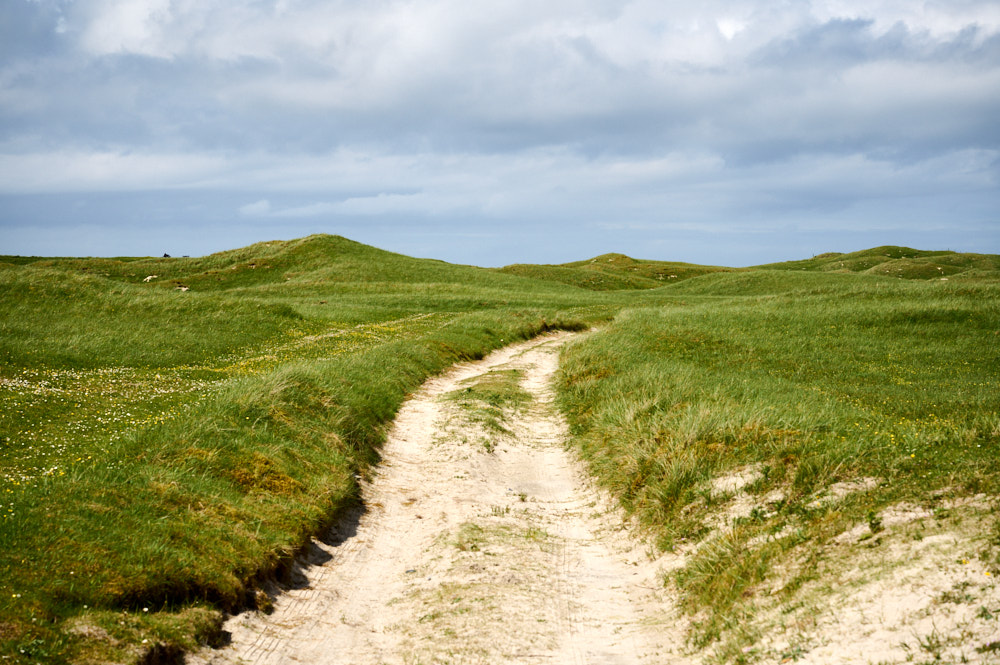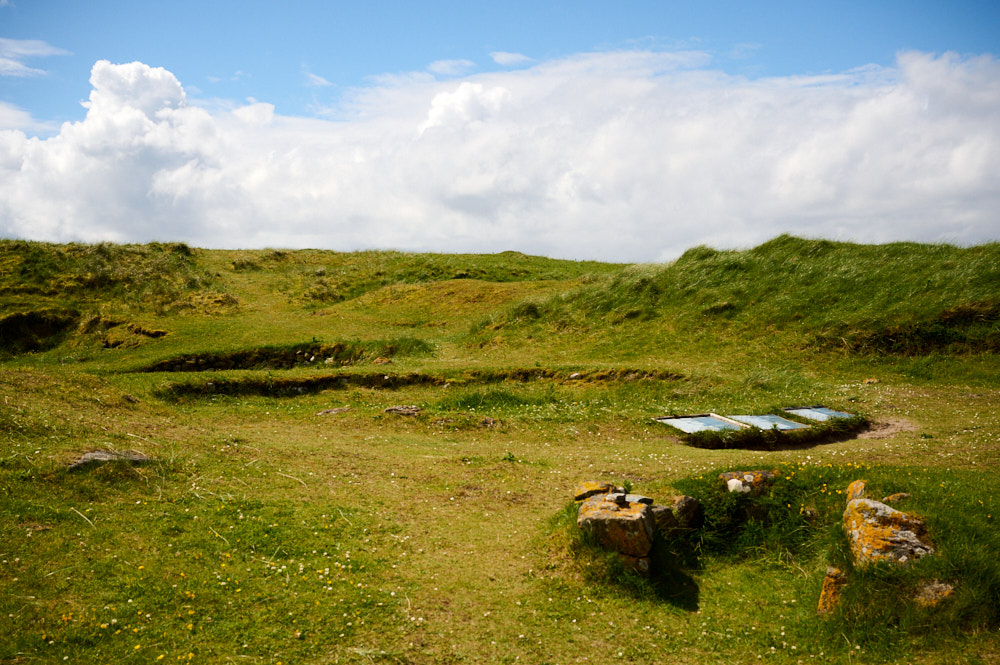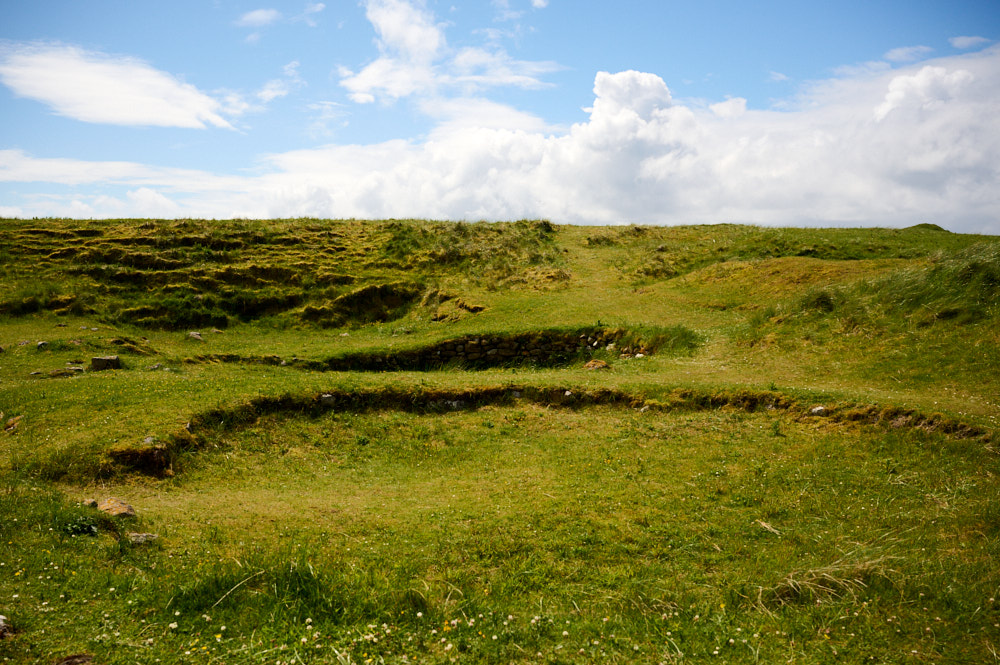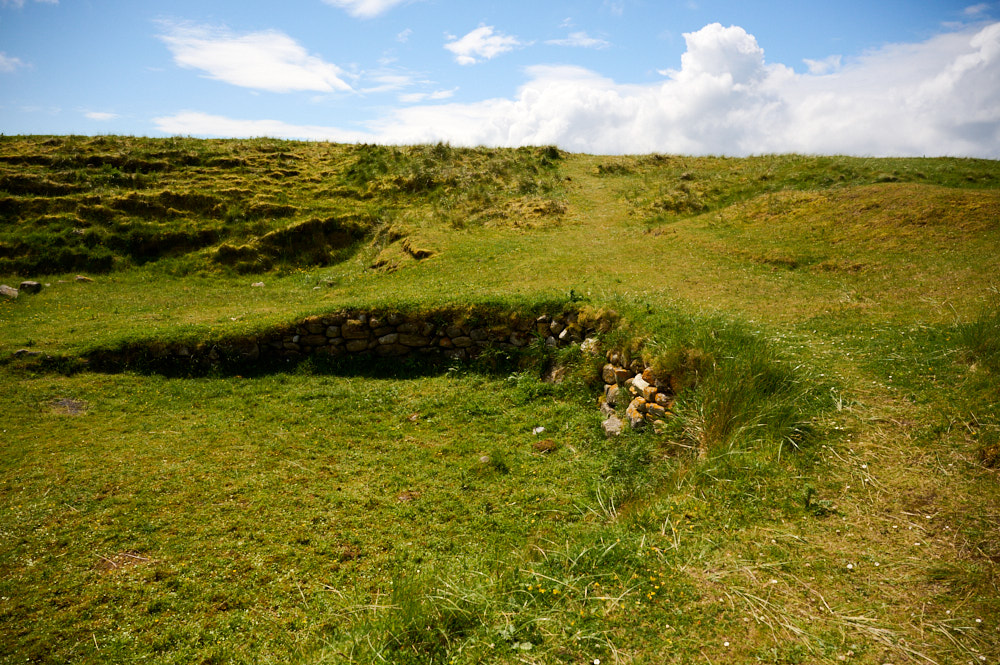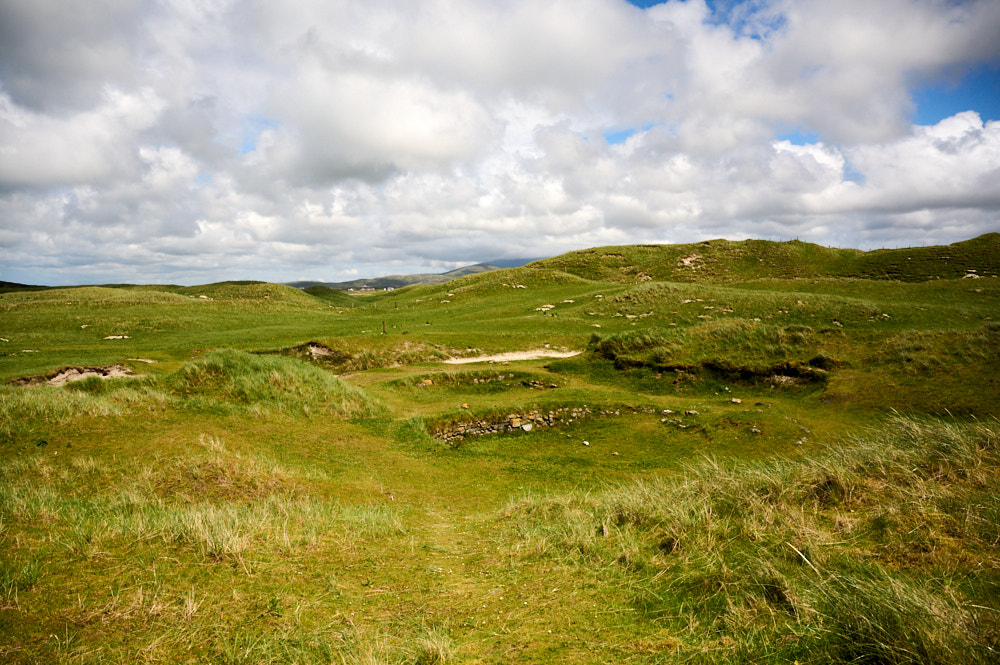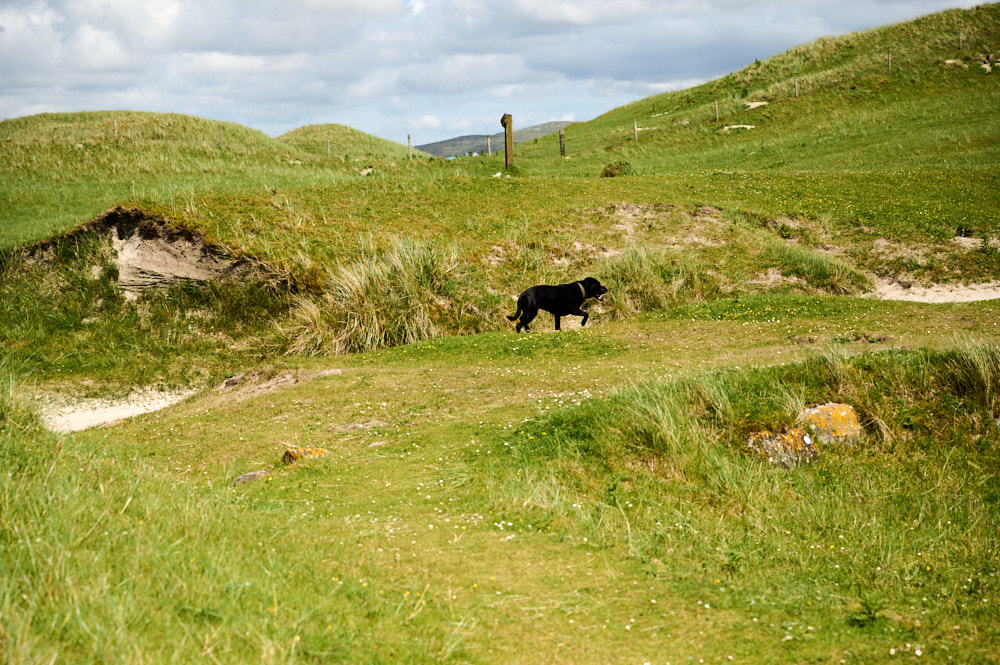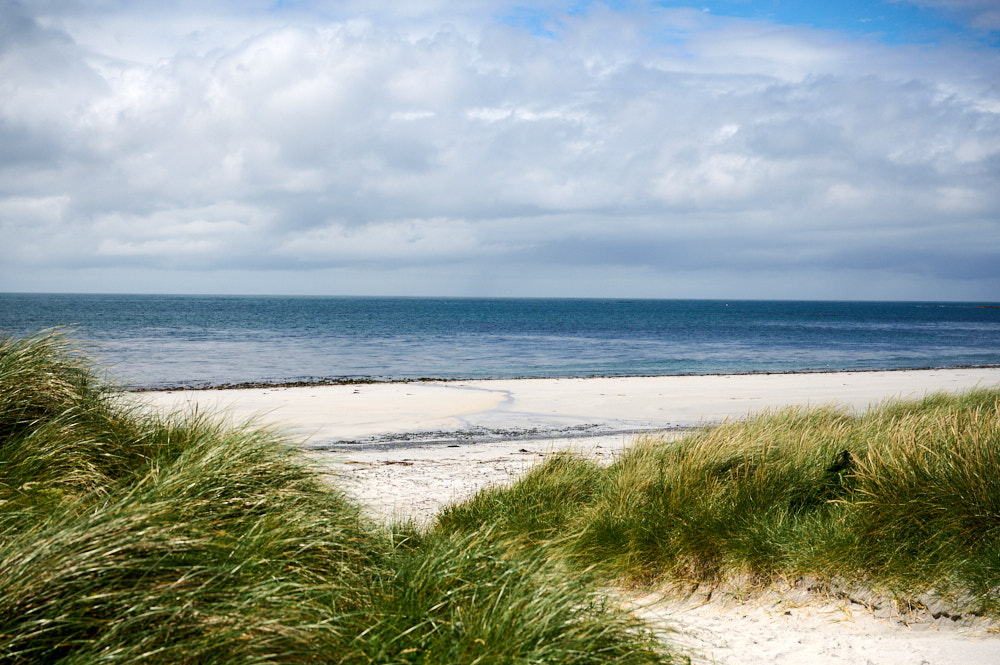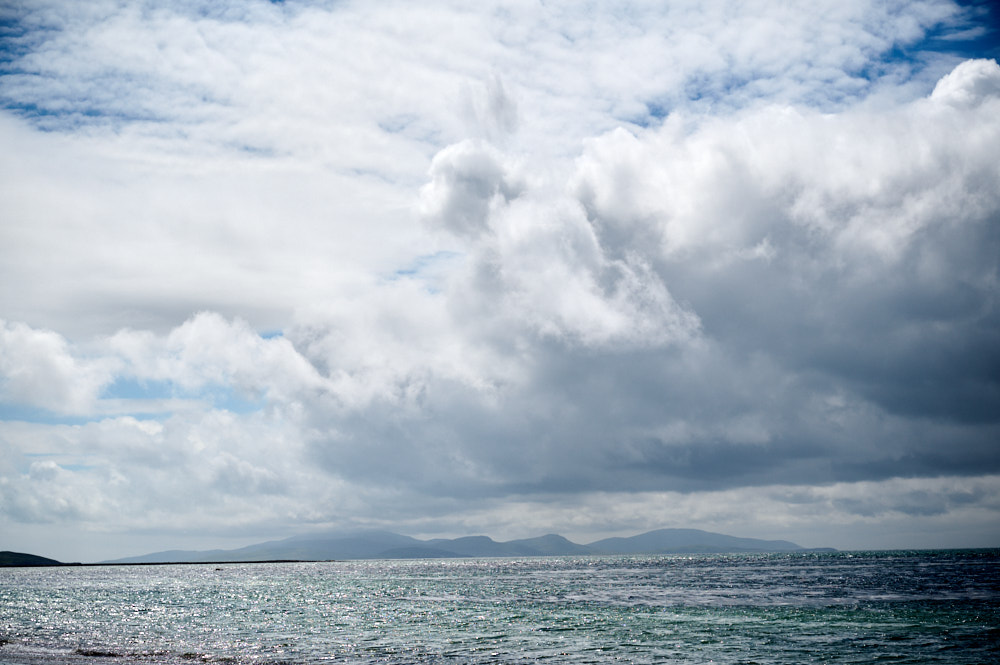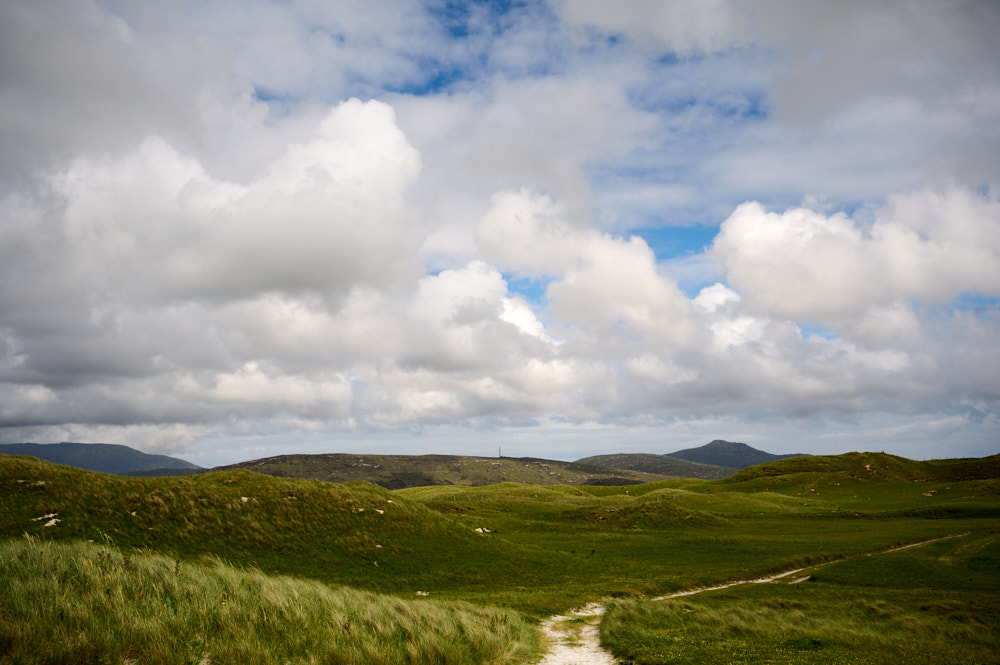
A classic traffic jam when going home to my thatched cottage.
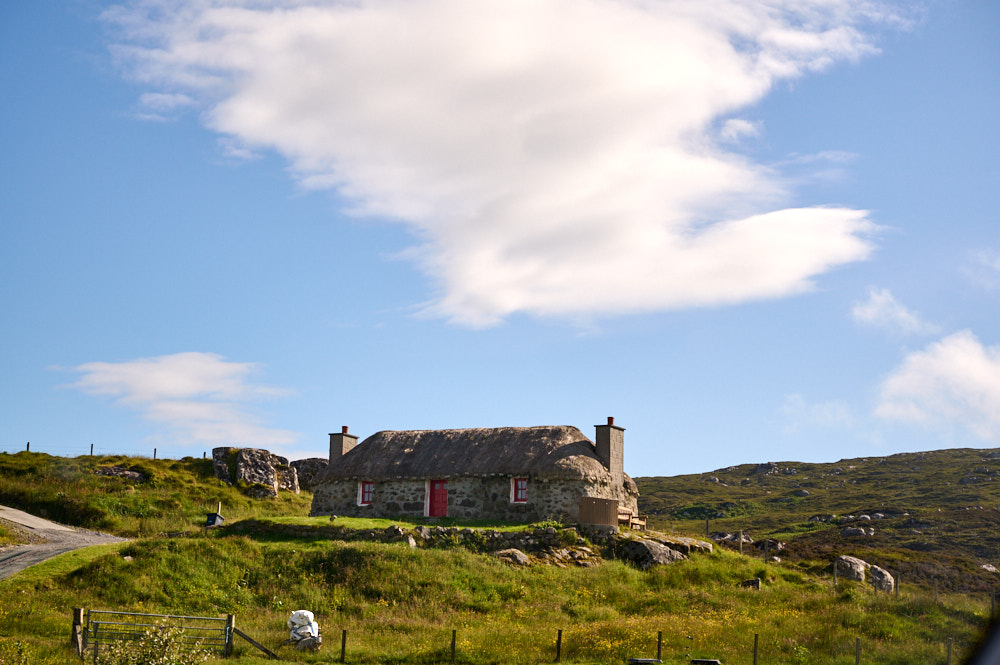
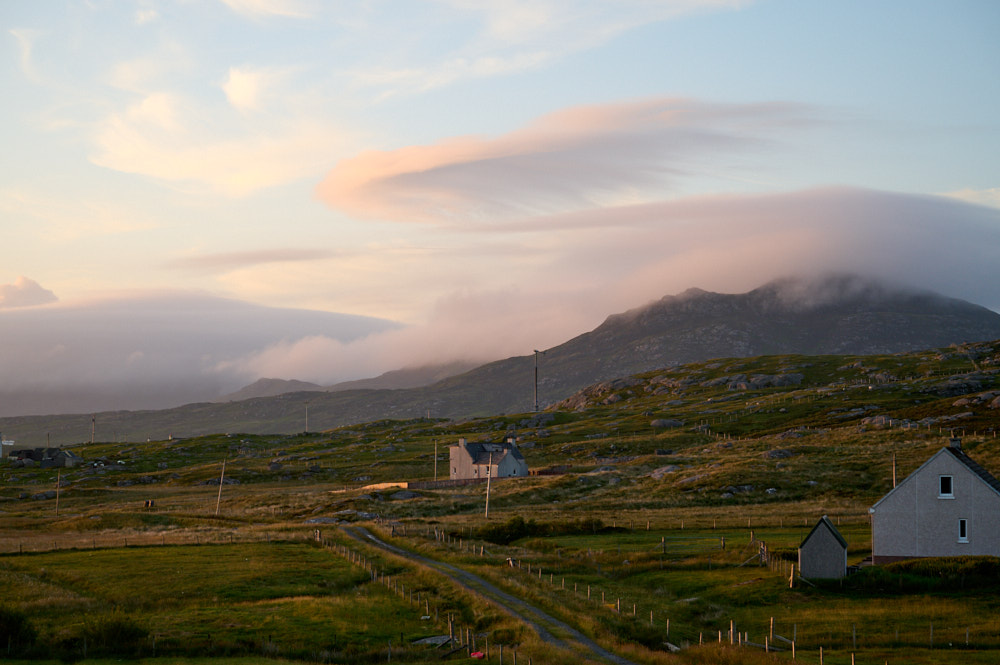
Another stunning sunset, which I couldn´t quite enjoy due to the midgets.
Howmore church
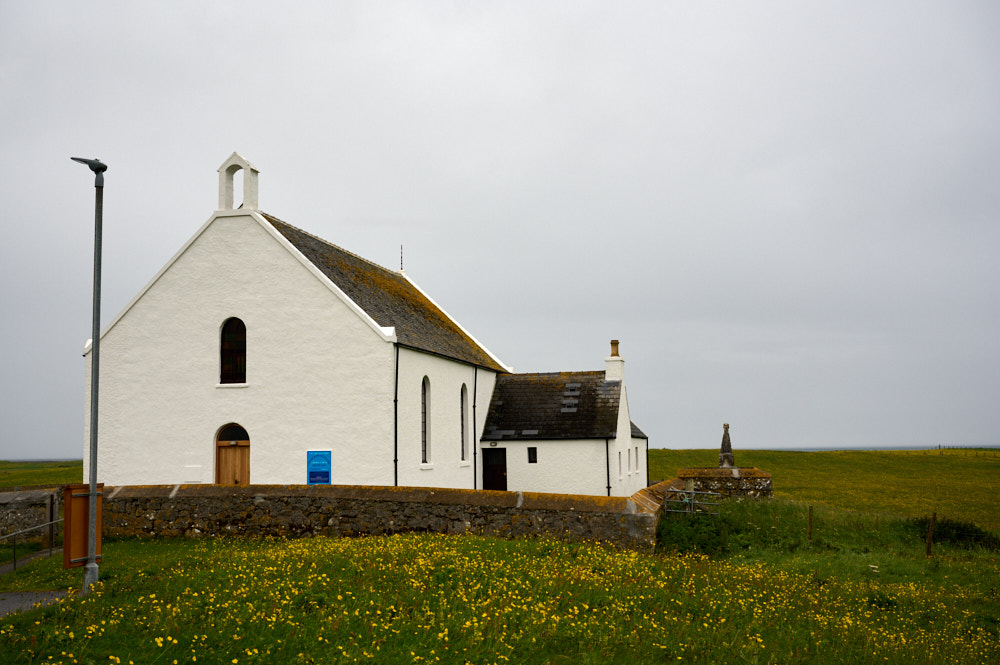
Howmore Church was built in 1858 and is only the youngest in a long list of churches and chapels in Howmore. I parked the car here and continued walking to the remains of the other ones.
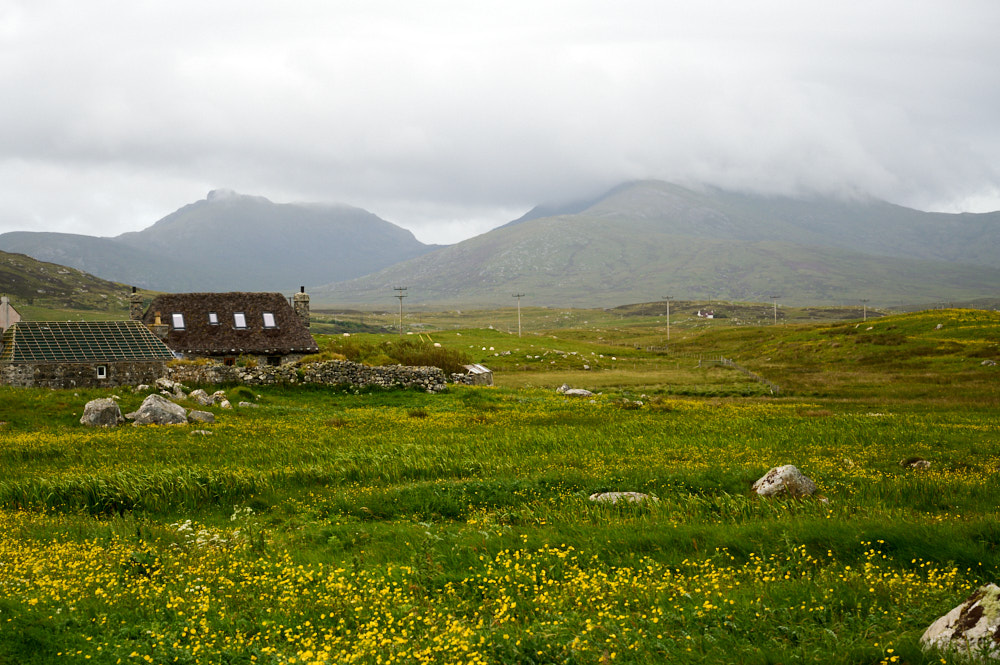
View of the Crofters Hostel which was closed during my visit to Howmore.

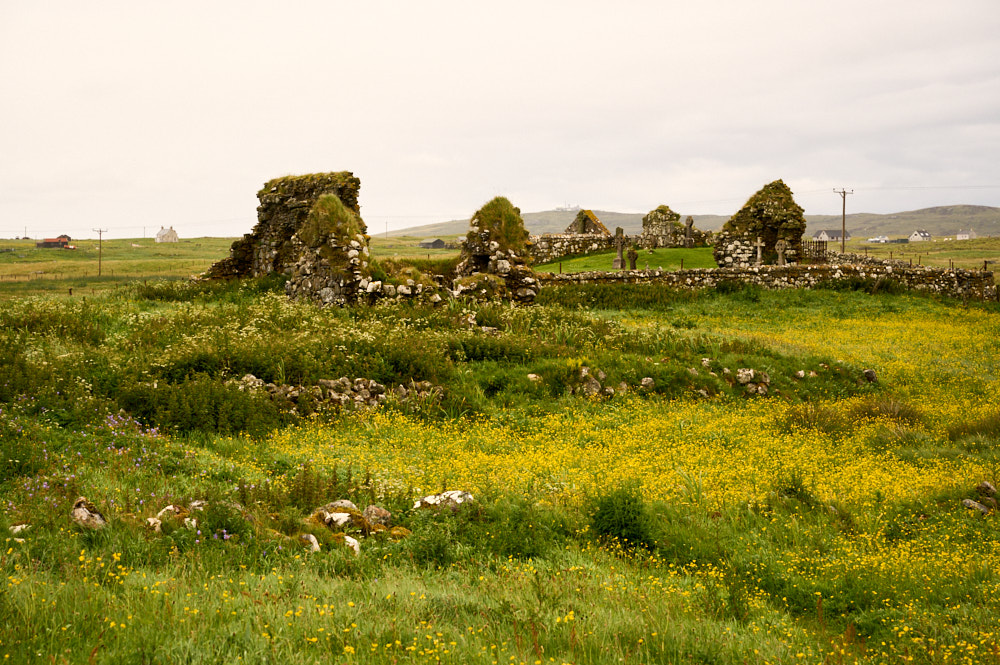
View of the series of churches, seen from the hostel.
TEAMPULL MOR
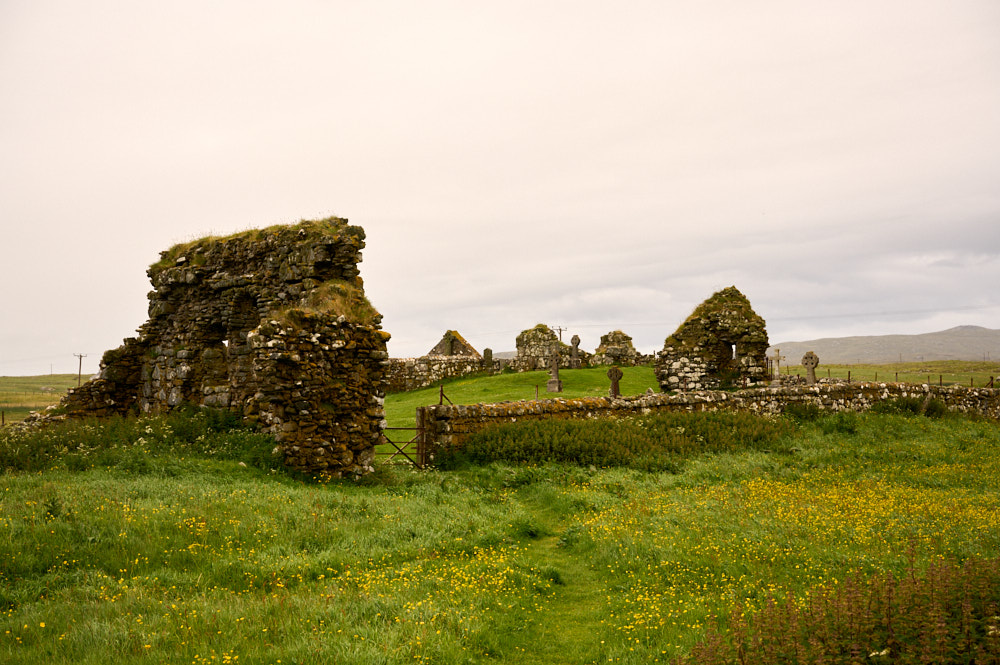
It is hard to see where one building ends and another one starts, the wall (probably built out of stone of the chapels) also doesn´t help.

This is the Caibeal Dubhghaill, Dougall’s Chapel, measuring just 5.2m by 3.5m. More striking is the large gable containing two windows that lies to your left as you go through the gate in the wall. This was once the east gable of the Teampull Mor, also know as St Mary’s or the Large Church. (Scotland Undiscovered)
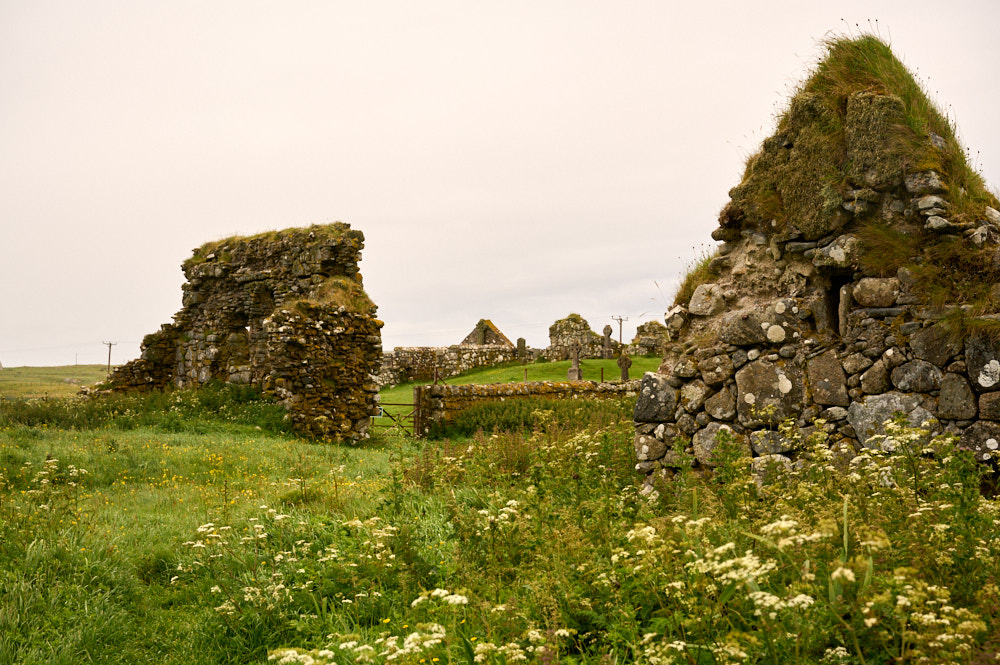
It isn´t known how old most of the buildings are, but Teampull Mor may have origins as early as the 1200s.
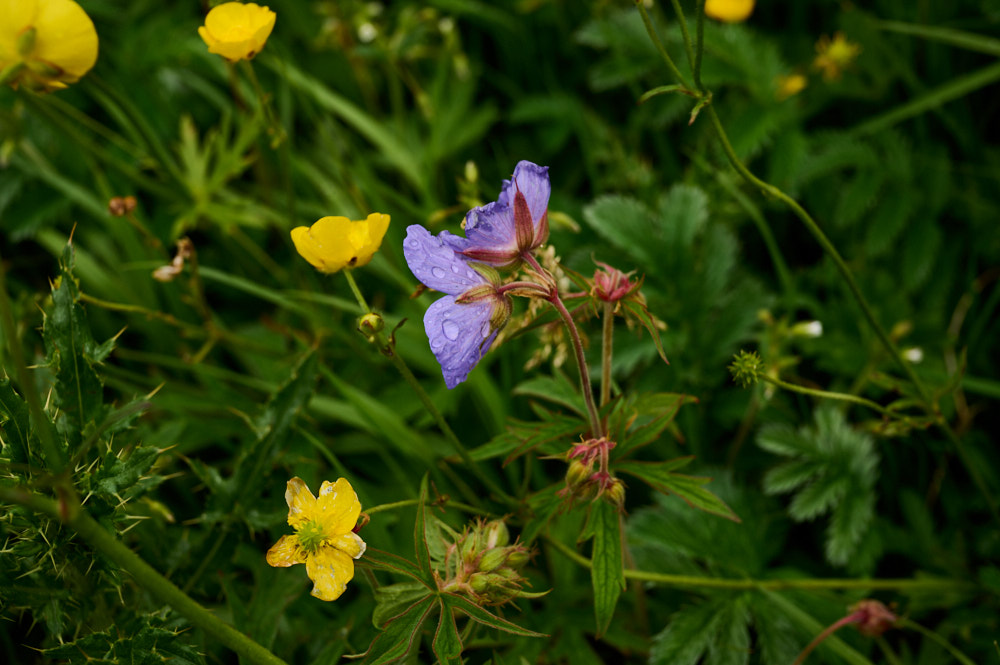
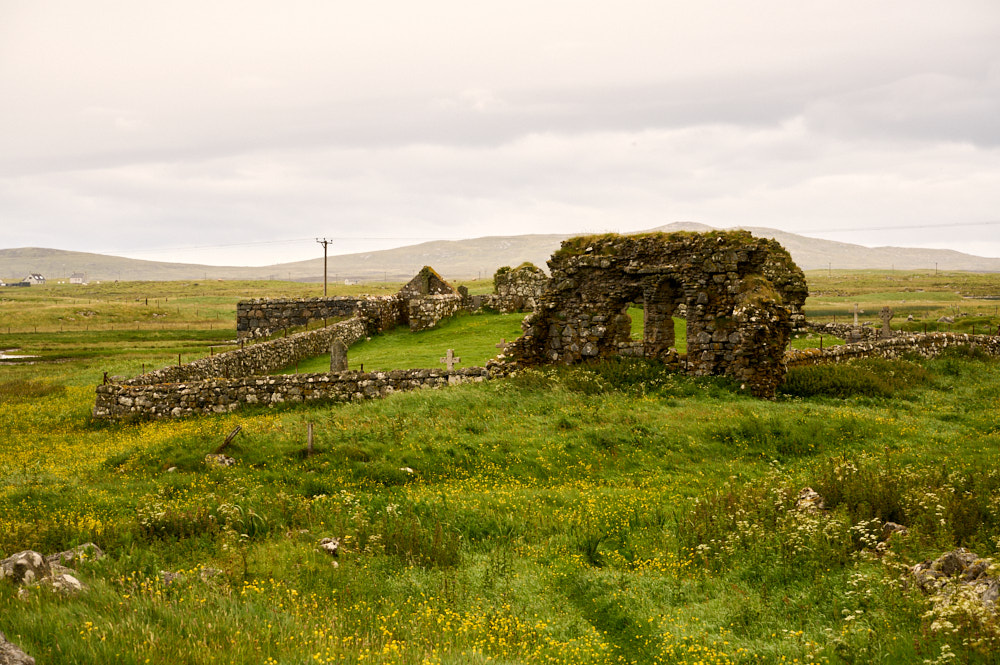
The remaining two chapels stood at the upper, north-east, corner of the walled area. One was demolished in 1866, but the walls of the other, the Caibeal Chlann ‘ic Ailein, Clan Ranald’s Chapel, still stand. Clan Ranald’s Chapel probably dates back to 1574. (Scotland Undiscovered)
